What tools do I need for wax carving?
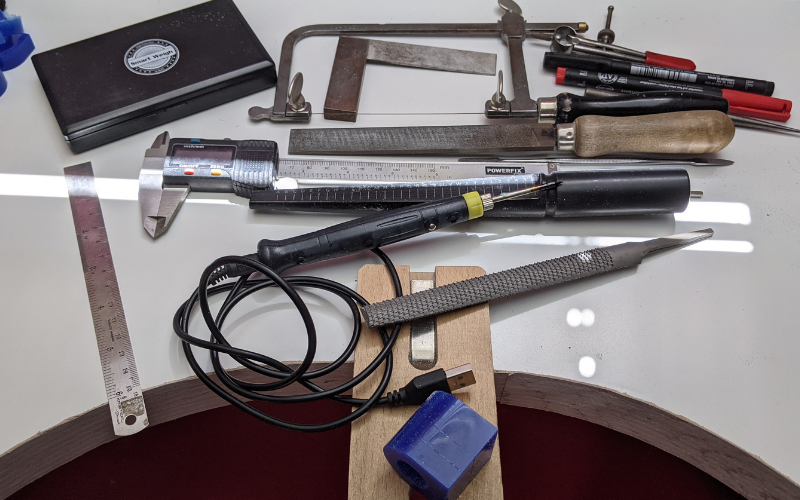
There are A LOT of tools out there for wax carving. Luckily you don’t need all of them! You can get started with just a few essentials. Use them to find out what it is you like to do with wax carving. And then invest in the tools that help you do that better and quicker.
The tools below are the ones I use for wax carving. They might not all be of interest to you, it depends on the type of jewellery you like to make. If you like organic shapes, you might not be interested in all the measuring tools. If you like sharp lines, melting wax might not be for you.
Read through and use what works for you!
Use what you have
If you already make jewellery, you probably have most of these tools. Just use them. Using your regular files on wax is not going to destroy them straight away. Clean the wax from your tools when you’re done and you can use them on metal again.
Saw
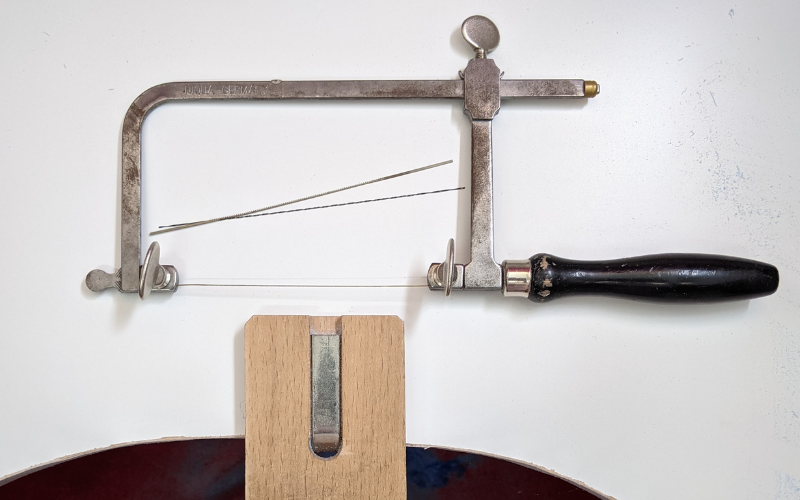
To start anything, you first need to pierce your bit of wax free from the block or ringtube. There are different saw blades you can use for piercing wax.
Wax blades: the blade is a little spiral with teeth going around. Makes piercing a big block of wax super easy. Not very precise though and leaves a big gap.
Skip-a-tooth blades: only has half the amount of teeth that a regular sawblade has. The blade doesn’t get clogged up as quickly, so piercing big pieces is easier. I prefer this one over the wax blades.
Regular blades: for any precise work, I use the same blades I use for metal. You can use these blades for piercing through big pieces of wax as well. It just takes more time because the teeth easily get clogged with wax.
Files
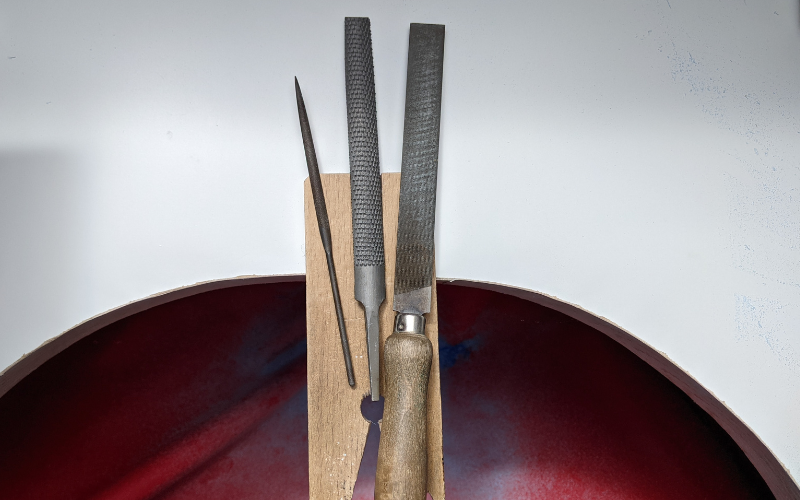
You can get a lot of shaping done with just files!
Hand file: same hand files I use on metal. The coarser the cut, the easier it files wax.
Wax file: I have one really coarse wax hand file. You can quickly file your wax down with it. It’s good for flat surfaces, but it doesn’t do curves very well.
Wax files are not absolutely necessary. But if you want to get one I would get a double-end wax file. It has 2 different cuts on the one file, so it’s more versatile.
Needle files: for any details, small spaces, finishing etc, I use my regular needle files. You can get wax needle files as well if you prefer.
Measuring and marking
When you want to have any kind of precision in your work, you need tools for marking and measuring.
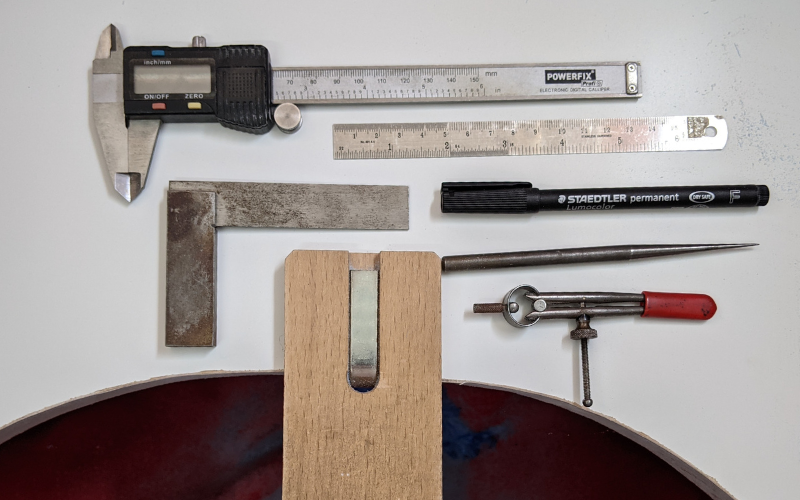
Callipers: I use callipers to measure any distance in wax. I prefer these over a dixieme gauge. A dixieme gauge only goes to 10mm, and I often make things that are bigger. Plus a dixieme gauge leaves little dents in the wax.
Set square: to measure 90 degree angles.
Ruler: to measure distances on my dividers.
Dividers: as long as I have a flat side to use as my guide, I’ll use dividers to mark straight lines. Plus you can use it to mark circles, measure equal distances, etc.
Scribe: to mark straight lines with a ruler when I can't use dividers, and to mark centre points.
Permanent marker: permanent marker is perfect for any freehand drawing you want to do. If it’s not to your liking you can easily file it away and try again. Although it says permanent, it does rub off when you’re constantly touching it. So just reapply as you go along.
Rings
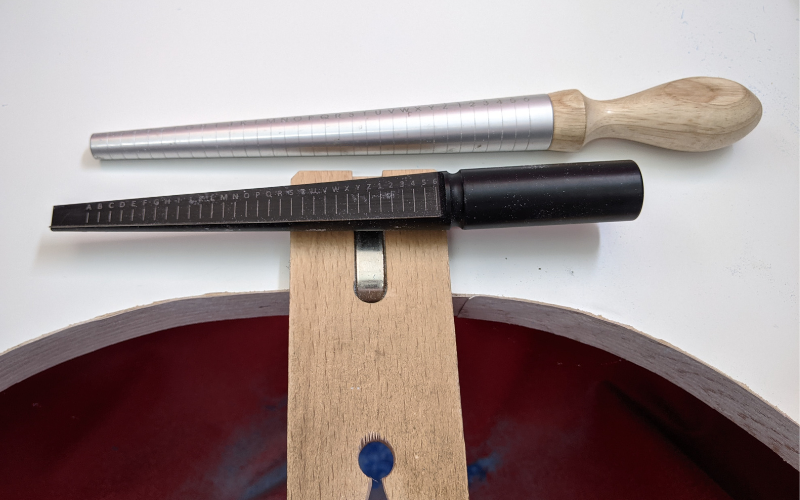
If you’re going to make rings on a regular basis, you’ll want a
Wax ring sizer: makes it really easy to increase the ring size for your rings.
Ring stick: the wax ring sizer usually has sizes on it. I still prefer to check the size on a ring stick. Just to be sure.
Micro-motor
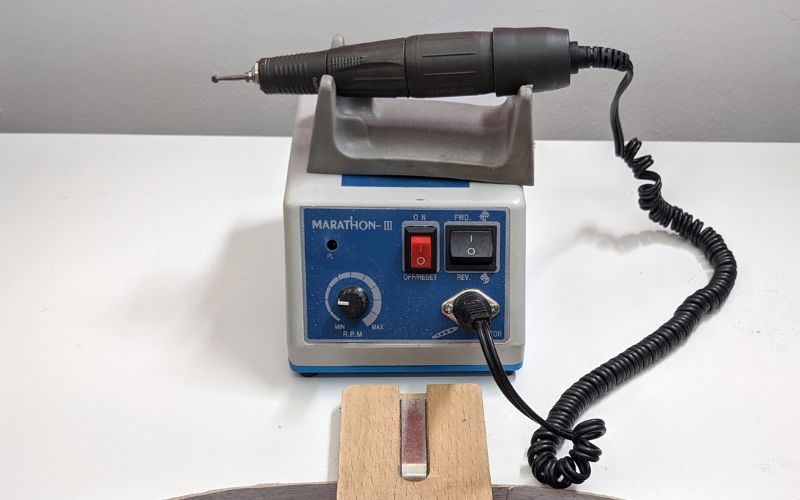
Drilling, burring, texturing, removing weight. There is so much you can do when you have a drill. You can use the same bits you use on metal, but you can get special wax burrs as well.
I personally have a micro-motor, but any type of drill works the same of course!
Carving tools
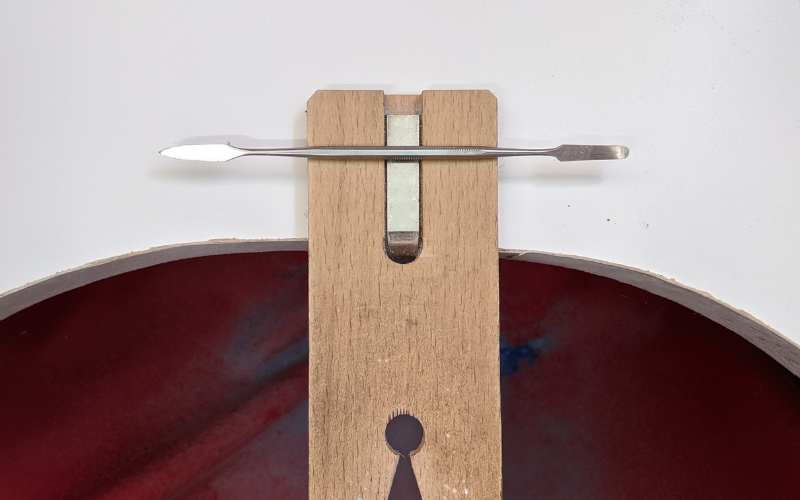
For the longest time, this dentist scalpel was my only carving tool. The point is sharp, so it's good for carving, details, making lines etc. The rest of the blade isn't very sharp, so it's good for smoothing the wax.
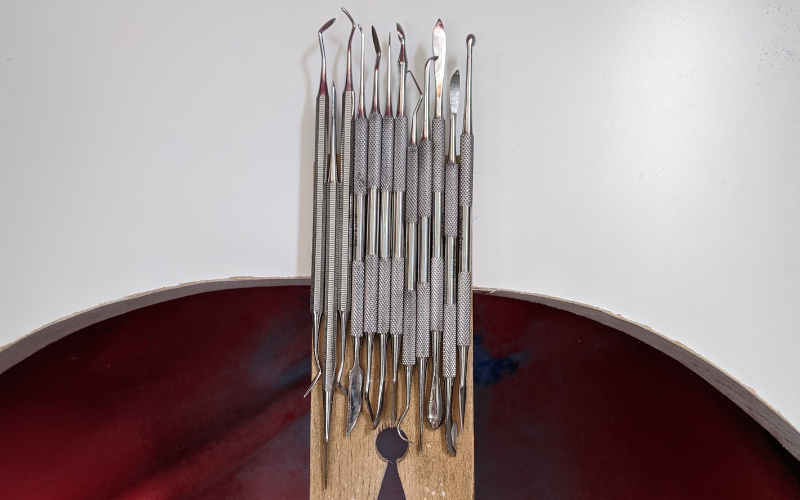
I got this set of carving tools a few months ago, so I haven't worked with them a lot yet. What happens with a set is that you love some of them, and the rest are not what you need.
If you have one versatile carving tool that you absolutely love, a whole set of carving tools might not be necessary.
And really, the dentist scalpel is still my favourite carving tool.
Melting
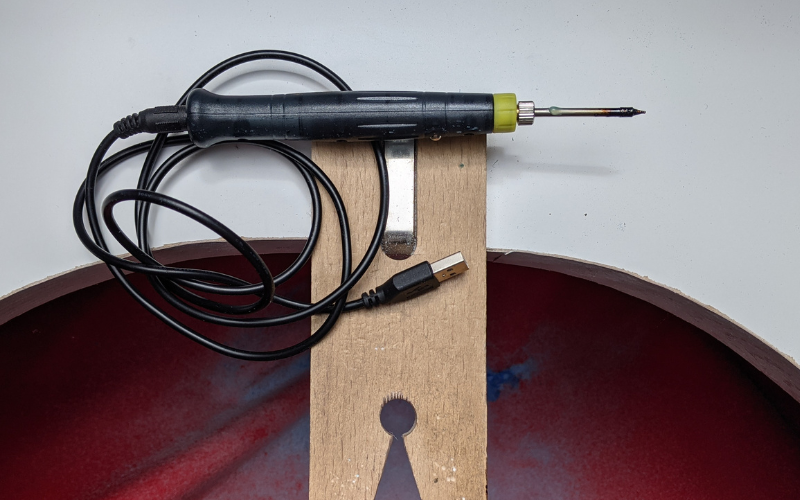
Melting wax is easy and fun. There are so many ways you can do it.
I have this usb soldering iron. It’s not very precise, but works for repairing and melting.
I would definitely get a wax pen if you plan to do a lot of melting. And if you're not sure this is for you, use a lighter, or a candle to try it out.
Scalpel blade
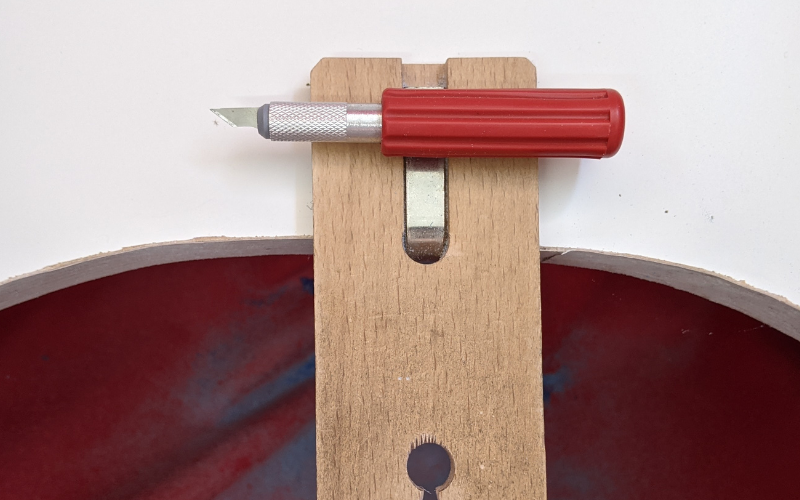
I use a scalpel blade for all the places a saw or file won't reach. The blade is much sharper than any carving tool, so it's good for slicing away wax.
Small unit scale
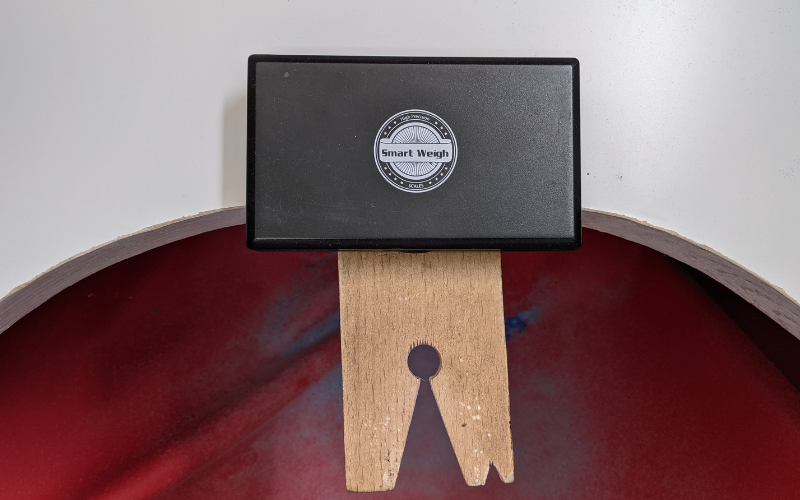
Wax is super light, deceptively so. With a small unit scale, you can calculate how much it’s going to weigh in metal and what it’s going to cost you.
That's it
These are all the tools I use regularly for wax carving. Most of them are the same tools I use on metal. Some are not even jewellery tools (I got the scalpel blades from a hardware store). And some are specific wax carving tools.
When you know what you like to do in wax, you can always get better tools. Love making rings? Get some more ring tools. Love melting wax? Get a full electric wax carver machine. Not sure yet what you like? Keep it simple and use some of the tools I listed above.
Now, tell me. What is your favourite tool? Leave a comment and let me know!